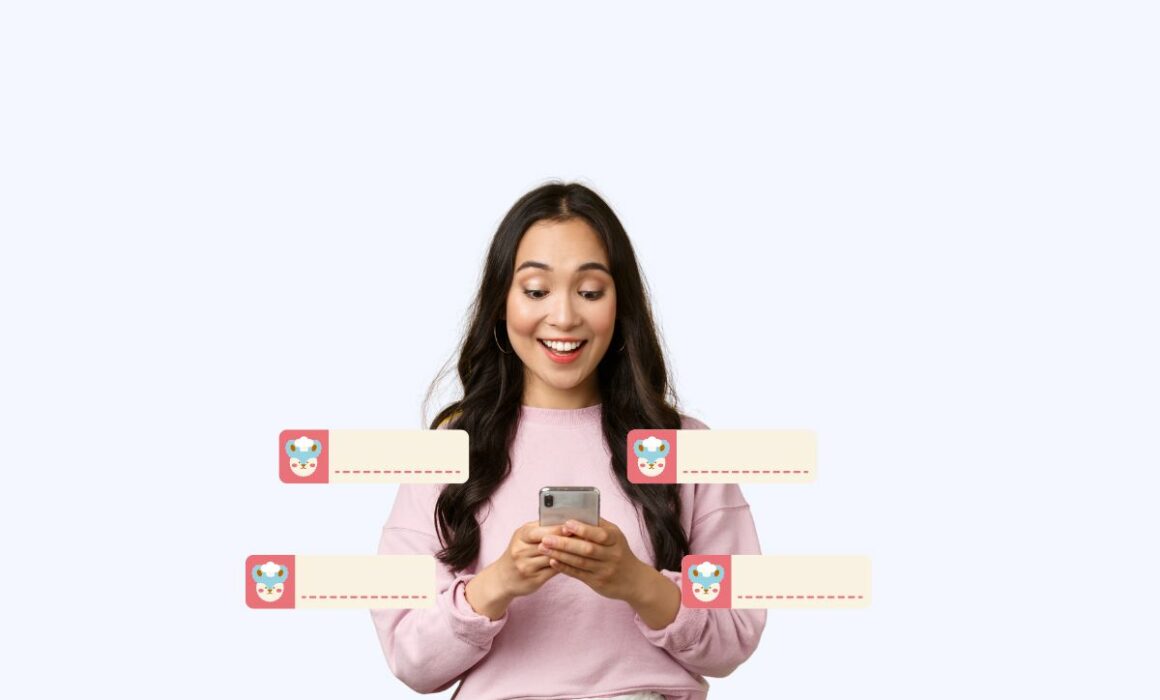Product Tours: A Definitive Guide to Enhance User Engagement
Product tours are a helpful tool used by product managers when guiding their users to find value in their products. By guiding how users interact with your product, you highlight how your product can add value to their everyday life.
Effective product tours are a combination of science and art. It equally requires data analysis and design to match the needs of your users perfectly.
So, the big question is: How can product tours enhance user engagement? This article will give you a definitive guide to using product tours to increase engagement.
But first, what is a product tour?
Table of Contents
- What is a product tour?
- What is NOT a product tour?
- Why do you need a product tour?
- Components of good product tours
- Guidelines for creating the perfect product tours
- Best product tour examples of 2023
- Best product tour software to create engaging product tours
- Conclusion
- Machine Learning In Finance: 12 Essential Applications
- How To Create Interactive Compliance Training For Bank Employees
- How Fintech Apps Are Using Gamification To Increase User Engagement
- Top Gamification Companies for Employee & Customer Engagement
What is a product tour?
Product tours serve as a guide that provides a complete walkthrough of your product’s features. Its main goal is to encourage new users to become active and drive product adoption. This will lead to product-led growth and, ultimately, product success.
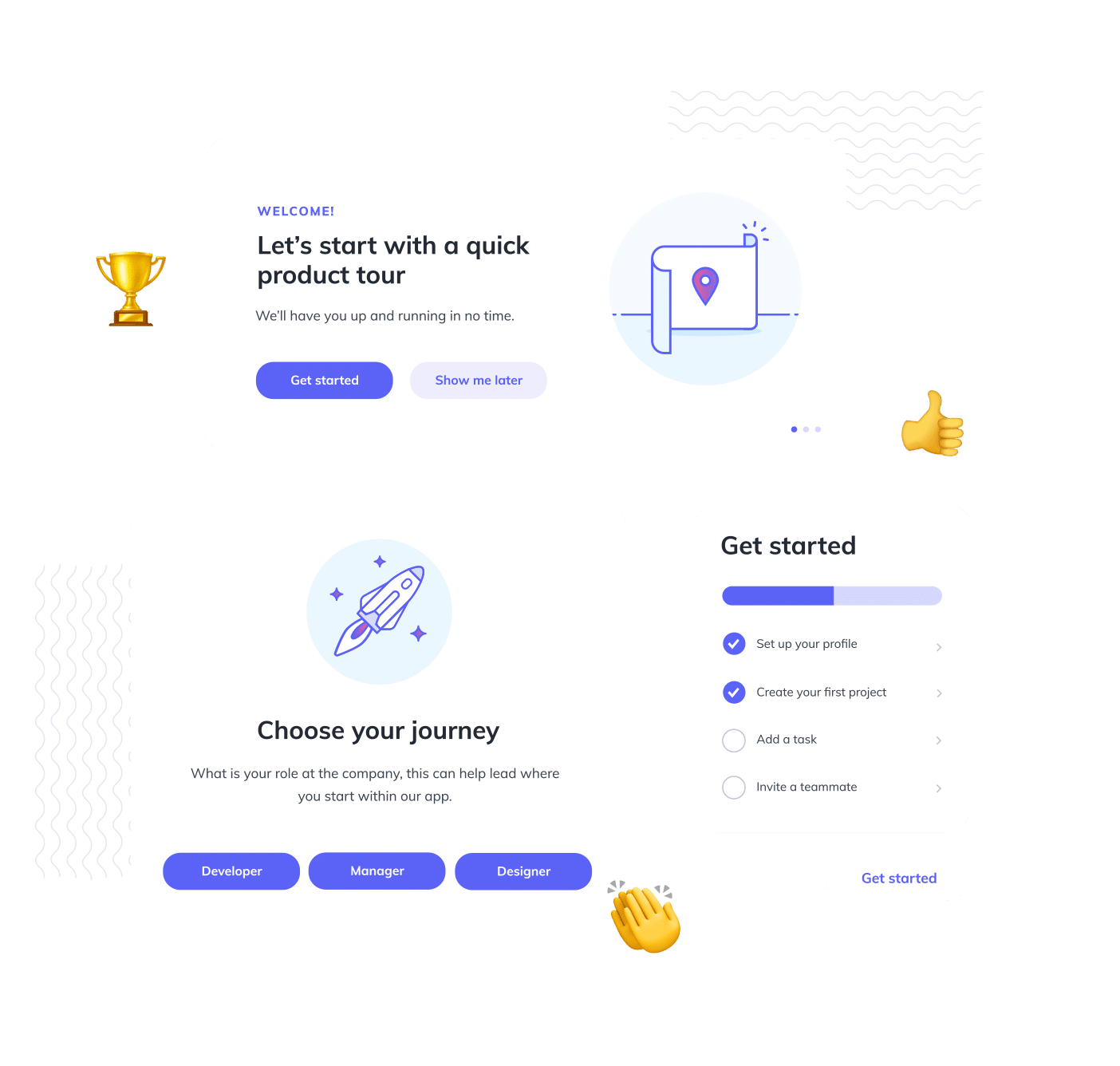
Source: appcues
Interactive product tours are created with in-app messages that make user onboarding easier. It’s composed of tutorials that help users navigate the app. It helps companies simplify the onboarding process as well as boost user engagement.
To understand product tours better, let’s discuss what they are not.
What is NOT a product tour?
Some product managers must distinguish product tours from product demos, employee onboarding, or client onboarding.
A product tour is a customer engagement tool that interacts with end-user to boost product adoption rates. It’s a set of experiences within the product itself. Therefore anything else that does not focus on the product experience is not a product tour.
Product demos are used to show off your product’s new features and are used to drive sales. Hence, they focus on selling rather than guiding users as they explore your product.
Why do you need a product tour?
Only some products out there have a product tour, so you may need to be more familiar with why your product requires it. Here are three reasons why your product needs a product tour:
#1. New users may need more information
Imagine signing up for a new product you’re very interested in. After signing up, you can explore and navigate the product independently.
Isn’t it confusing not to be given any guidance as to how you can maximise and fit the product into your routine?
Doesn’t it make you want to exit the app or the website and not give it another go?
Some product managers must remember that, although they are very familiar with the product they developed, their new users must be.
A good product tour highlights the value of your product, making it easier to understand.
#2. It saves time and money
A product tour will save you and your users time.
You can also save money with a successful product tour. New users will likely engage with your product immediately because of the tour. This will pique their interest and prevents customer churn.
#3. It builds trust
Guiding your users straight to what they expect from your product shows reliability. It shows that you are willing to walk them through and save them the trouble of figuring out everything independently. This builds trust and helps you gain loyal customers seeking your business.
You can use your product tour to build trust with your customers. That’s why you need to know what makes a product tour exceptional.
Components of good product tours
Product tours are simply what the word implies – a quick tour highlighting your product’s key features and functionalities.
However, these engaging tours are critical to boosting user engagement, so keep that in mind when designing your product tours. They should fit perfectly into all the stages of the product adoption cycle.
Product tours start after new users sign up and log into your product. At that point, ensure that your tour includes the following components:
- Initial product overview or tutorial – The first thing your users need to see upon logging in is an initial product walkthrough. The product overview may be the tour itself. However, the tour can still include some important elements for better results.
- Interactive guidance – You can add chatbots to accompany your users as they go through your product tours. You can use it to provide easy-access information and minimise the need for technical support. This helps users navigate your product flawlessly and become productive in no time.
- Live messaging options – Adding a live messaging option is helpful if your users need to talk to customer service. With this feature, you give them the convenience of choosing what kind of help they want.
Provide your users with all the information they need to reach their “Aha!” moment. You must introduce your product’s core features as soon as they log in.
Guidelines for creating the perfect product tours
Now that you know what product tours are, let’s discuss creating a successful product tour to increase user engagement.
Every product tour has its purpose. It may be to onboard new users, walk current users through a product update, or highlight a new feature.
Creating the perfect product tour must be your top priority regardless of your main goal. Here’s a definitive guide to making the ideal product tours:
#1. Focus on your key features
A good product tour should be clear and definitive. It must define the product and its features, but only some things at a time.
Focus on the most essential elements of your product. Provide meaning to your product and what users can accomplish with it.
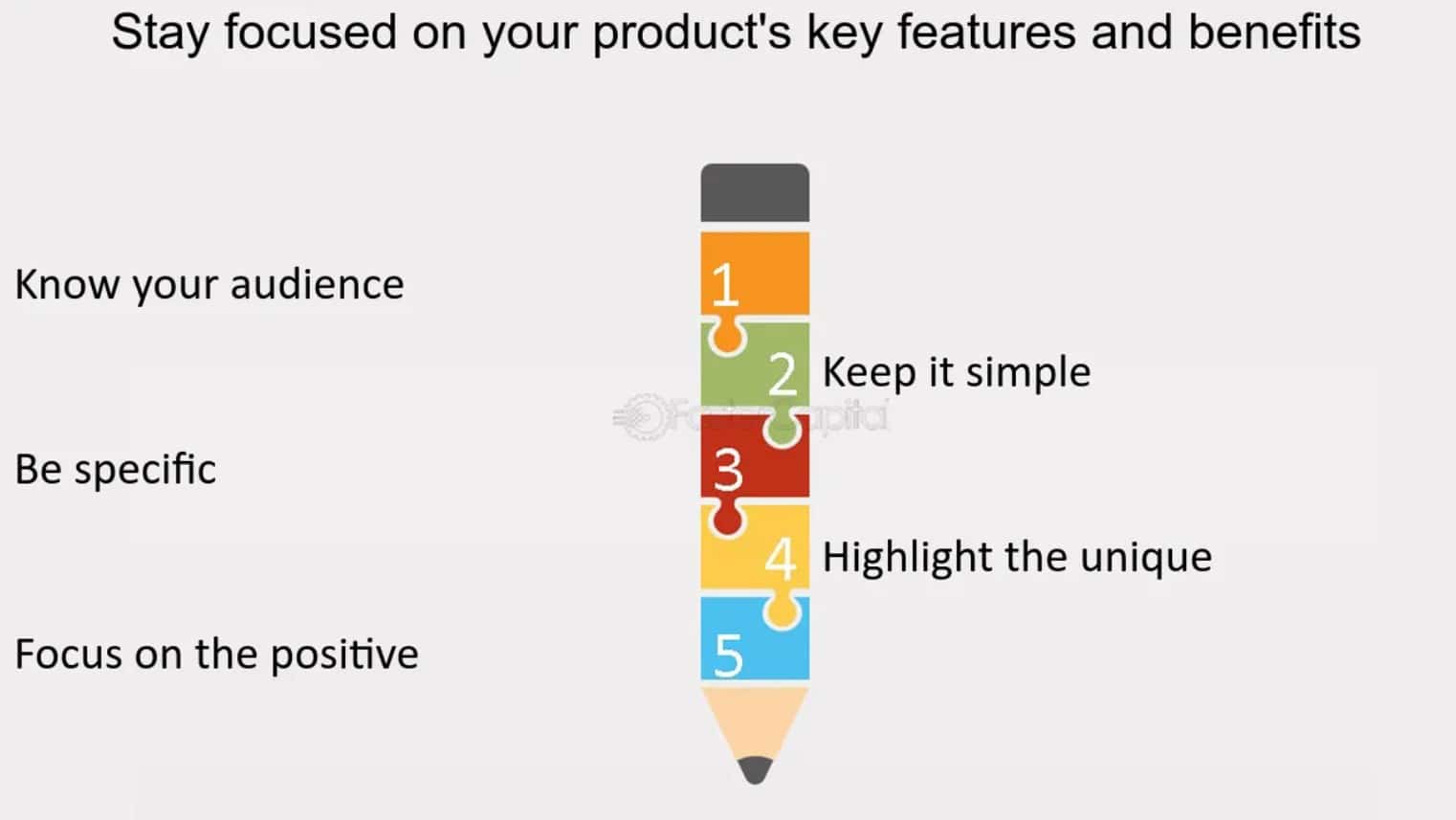
Source: fastercapital
Let’s say you are to create a product tour for a social media app. Here are the key features you can highlight:
- Point to where the search tab is
- Where the friend list is
- Where their subscriptions are listed, and
- How to subscribe and follow content creators
Answer your users’ questions while displaying how simple the functions are and how they can easily navigate the app.
#2. Promote a dependable brand experience
Maintaining a consistent brand experience across your channels is very important. Remember that to have an excellent user experience, your brand must have a consistent design, tone of voice and approach. This includes your onboarding, training, support, and product tours.
When your brand experience is inconsistent, your users will likely feel confused because specific standards are unmet.
To maintain brand consistency, design a user journey map. This will help you lay out the stages of the user journey and align the experience around your customers’ perspectives.
#3. Provide value
Product tours should never be disrupting or draining from your customers’ point of view. Instead, they should feel thankful and at ease during the tour. So introduce your product’s value as soon as you can.
If your customers don’t find tours valuable, they’ll likely exit and won’t be open to anything similar. That’s why it’s essential to create relevant and efficient product tours.
#4. Trigger product tours with user action
Product tours don’t have to start after users sign up for your product. It’s much better to trigger these tours with a specific user action to give it more context.
A quick overview is helpful, but initiating the tour in one go will overwhelm your users.
Give your users ample time to get used to your software and provide guidance whenever they hit a milestone. What’s the use of rushing them to keep them in your mobile apps anyway?
#5. Embrace self-discovery
One of your main goals is to show your users the gem that is your product. However, always telling them which way to go differs from how to achieve this. You can’t limit what your users will do with your product.
According to research, users who are free complete the tour at their own pace are more likely to complete it. You can add a pause button to allow users to return to the product tour whenever they want.
#6. Personalize
Creating generic product tours for all users is just as good as not creating a product tour. If you want to appeal to all users by making one basic product tour, you will likely appeal to none.
You can personalise product tours through segmentation and gamification.
Segment product tours according to user roles
To personalise your product tours, segment users based on their characteristics and purpose for using the product. You can also segment users based on their language preference, product version, user persona, and geographical location.
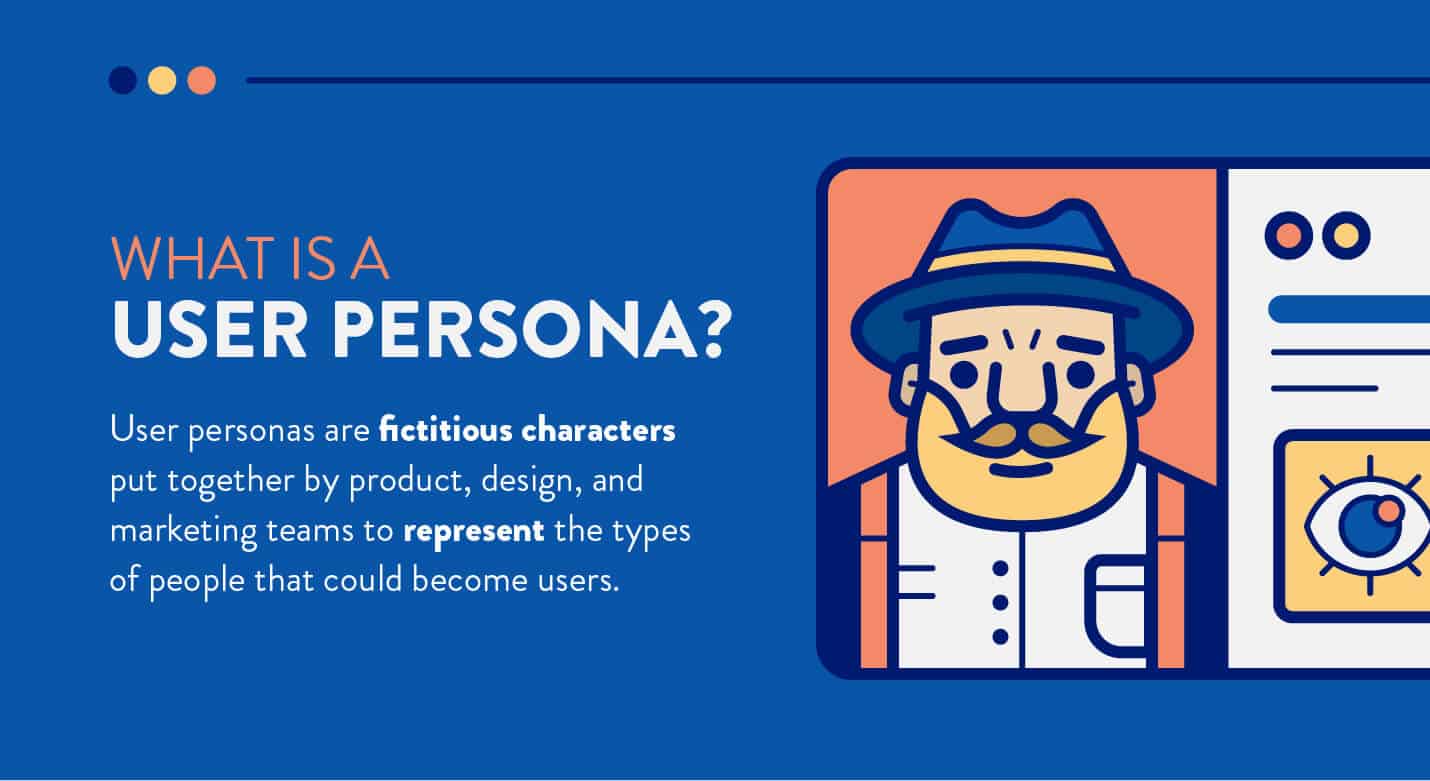
Source: clevertap
You can implement user segmentation by:
- Tracking user behaviour – Use a product analytics tool to add information about product usage and user behaviour. Understand how the different groups use your product and create product tours that are interesting for them.
- Comparing activity – After putting your users into groups, you can compare the different types of your users. This will help you understand how to create a tailor-made product tour just for them. You can also increase engagement for users with low activity and prevent them from churning.
- Measuring impact – By measuring the impact of your product tour on different user segments, you can make relevant changes to increase user engagement.
Applying gamification strategies
Another way of personalising product tours is through gamification.
Gamification is the application of game-like elements, such as challenges and rewards, to encourage participation and engagement.
Here’s how to gamify your product tours for a more personal touch:
- Avatars – Allow users to design their avatars in a way that resonates with them. This adds to your product’s fun value and excites them of what’s to come.
- Checklists – Providing a list of all the stages of your product tour helps keep users focused and attentive. Knowing what’s in store gives your users a grasp of the tour and how it will help them.
- Rewards – Some users may need more motivation to finish your product tour. That’s why you can use a rewards system to spice it up. Rewarding users with coupons at your store is the best and most effective way to motivate them.
- Badges – To ensure that users will return and finish your product tour, reward them with badges for every stage they accomplish. This allows them to recognise their progress and encourages them to go through and finish the tour.
#7. Timing and context are key
The last tip for a perfect product tour is to showcase your product’s value exactly when your users need it. If you create a product tour about a new feature, launch it when the feature is already on the page.
If your product tour is misplaced where it’s relevant, it might cause a negative experience for the users. However, when your tour pops up exactly when it’s needed, it enforces the value of your product. Find the perfect combination of timing and context for your product tours, and you’re golden.
Best product tour examples of 2023
#1. Demio
Demio is a webinar hosting company with one of the best product tours because of how interactive it is.
The highlight of their tour is a fake webinar for their users. The webinar will start with a Demio employee explaining what the webinar is all about. They will then give you the hosting spotlight and allow you to share your webcam and presentation.
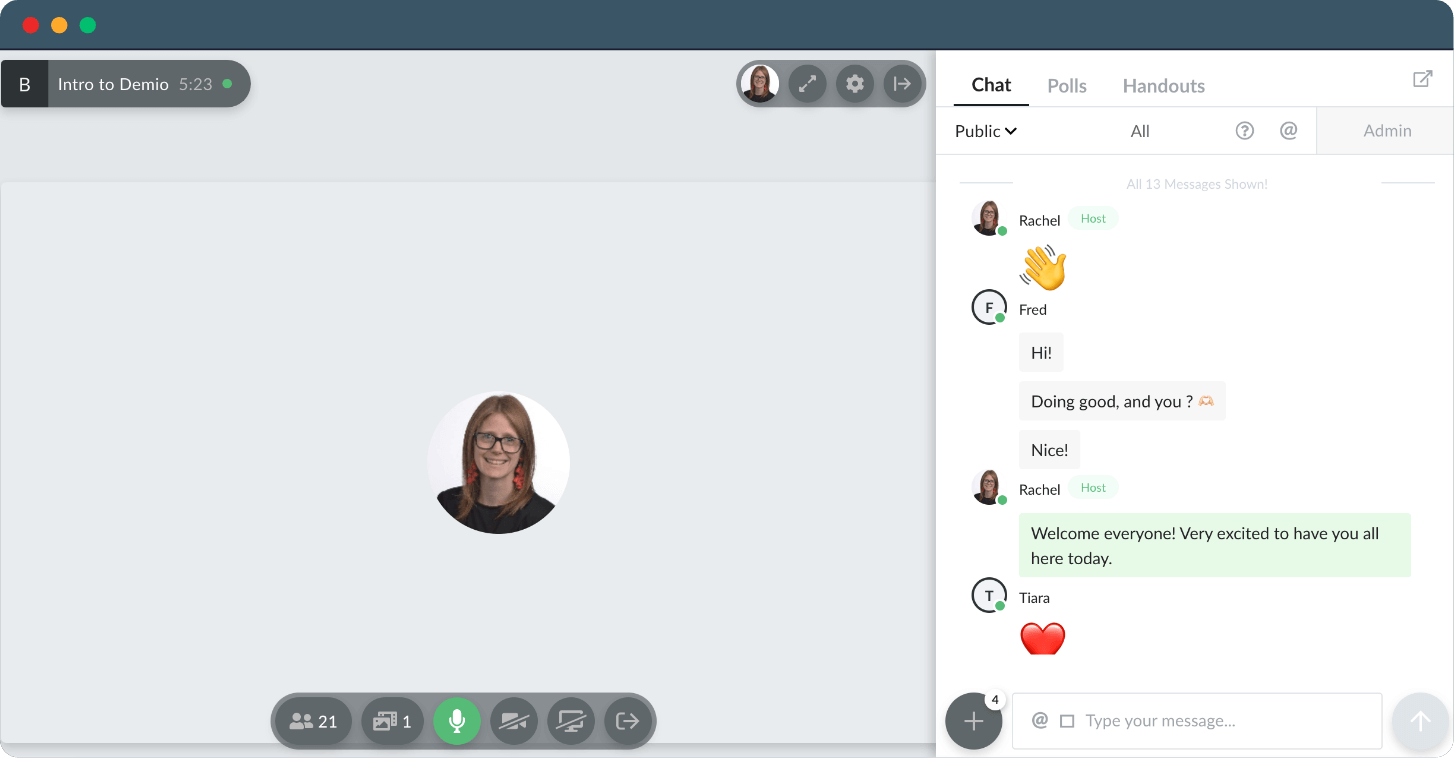
Source: demio
To make things more exciting, some fake guests will attend to give you the feel of using the product.
Demio perfectly captures the meaning of a successful product tour that highlights the value of its product. All of this while giving their users the time of their lives!
#2. Typeform
Typeform is an all-in-one online forms platform that their clients use for registrations, incident reports, lead generation, and many more. Because of its vast platform, Typeform’s product tours vary for different users.
What makes Typeform’s product tour unique is its laid-back and friendly tone. They let the users get comfortable before the tour.
Typeform replaced the start button with a “Show me the highlights” button, as seen below. This conveys that the tour will be quick and concise, only showing the essential features of their product.
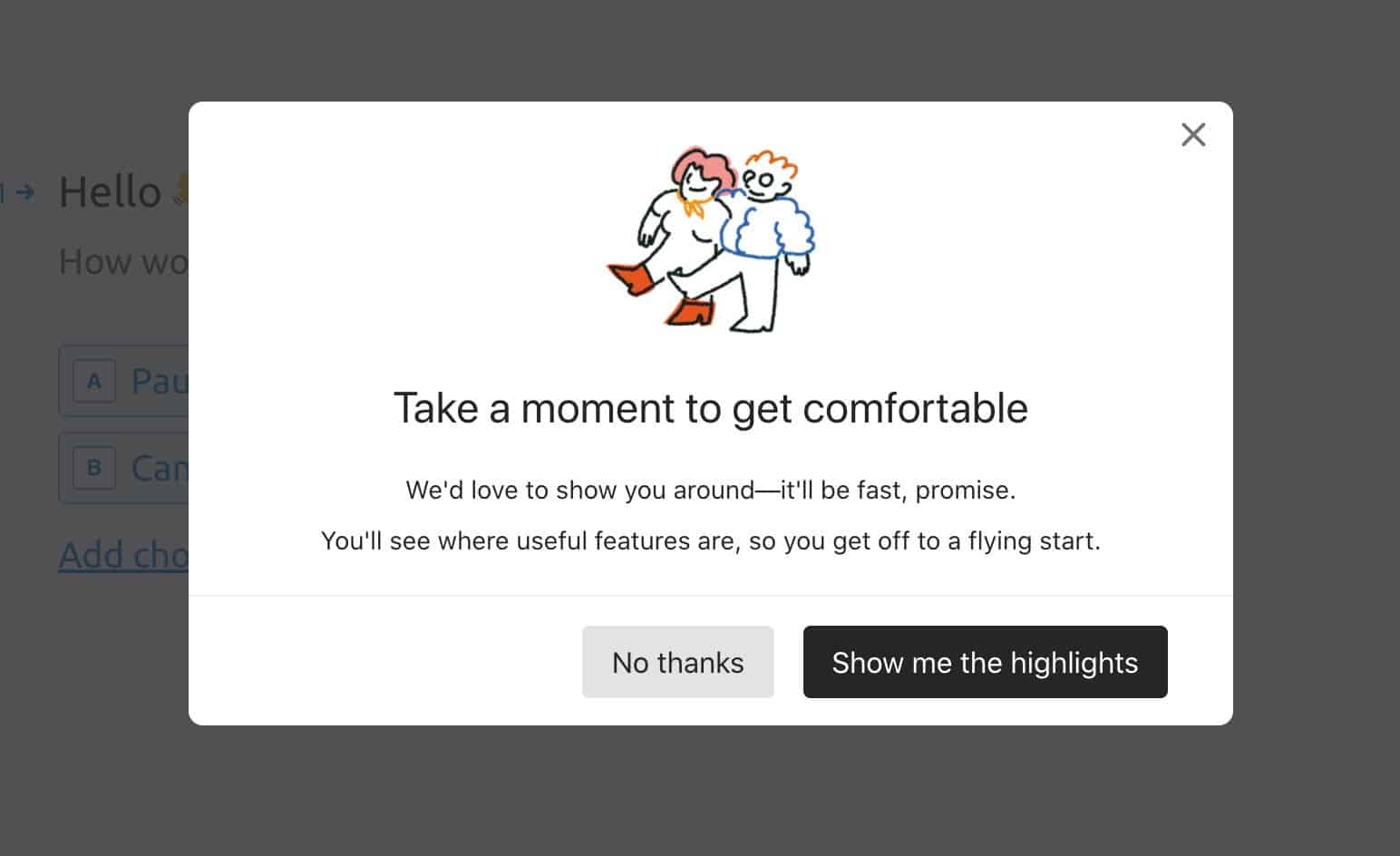
Source: typeform
If their client doesn’t want to start from scratch, Typeform offers masterclass templates relevant to their needs. They use these templates as product tours to educate, engage, and drive their customers to make successful forms.
Introducing their users to various unique templates is an excellent way to establish their value.
#3. Slack
Slack is one of the most successful messaging apps many corporations use today.
For their product tour, Slack uses helpful tooltips and personable copies. Their tooltips explain how public channels and direct messages work and how to differentiate each one.

Source: slack
Slack also perfects brand consistency with its app and website’s design and laid-back tone. The product tour encourages you to chat with the bot to learn the key features and mechanics of the product.
Best product tour software to create engaging product tours
#1. Userpilot
Userpilot is a product tour software that provides personalised in-app experiences that help their clients increase engagement.
Aside from their friendly interface, they also offer many ways to segment users. Here are some ways Userpilot segments your customer base:
- Custom event
- Location
- Feature tags
- NPS score
- Language
#2. Mambo
Your product tours should be a memorable experience for your users. That’s what Mambo is all about. This gamification platform helps businesses enhance user engagement and experience with game-like strategies.
Mambo adds competition and rewards to your product tour, making it fun and engaging. With custom app gamification, you can provide a personalised experience your users can access anytime from any device.
An interactive product tour that excites your users about your product is what you need to increase user engagement.
#3. Appcues
Since its launch in 2013, Appcues made a massive wave of transformation to the SaaS product tour landscape.
With its easy product tour builder, you can create elegant visualisations for product walkthroughs and slideshows. You can construct tooltips and slideouts across your product tour to make your users’ journey smooth.
Whether you want to enhance your existing product tour or start from scratch, Appcues will guide you through every step.
#4. Userguiding
If you want to create great product tours but need more coding knowledge, userguiding is the product tour tool for you.
Its code-free software lets you choose the popups you want for your product tour. You can also select the type of welcome modal you need by adding the details and images.
Userguiding allows you to design great product tours easily and on a budget!
Conclusion
Finding ways to enhance user engagement is undoubtedly one of your top priorities as a product manager. A successful product tour will increase engagement, improve onboarding, increase adoption, and help generate more sales.
Following this definitive guide, you can earn more significant returns from your product tours today and in the long run.
To create a fun and interactive product tour, book a demo with Mambo today!
Download your free
“Gamification Guide”
Get your PDF now and start transforming your approach to digital engagement!
Latest Posts
Machine Learning In Finance: 12 Essential Applications
The impact of machine learning on finance is significant. Thanks to this technology, financial institutions are now equipped to make efficient decisions. Through the analysis of data sets, machine learning […]
How To Create Interactive Compliance Training For Bank Employees
Banking compliance training isn’t just another task. It’s the stage where everything else performs. Banks must navigate a myriad of regulations and laws. After all, this is a trust-driven, high-stakes […]
How Fintech Apps Are Using Gamification To Increase User Engagement
Discover how gamification in fintech is revolutionizing financial engagement, making banking fun & boosting user loyalty.
